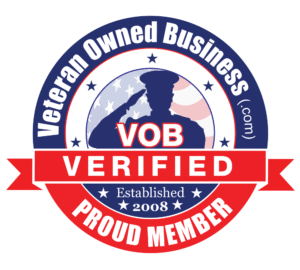Optimizing websites is a process that continues to become ever-more refined. While it can be easy to get lost down rabbit holes explaining the current SEO methods, a good optimization strategy is built on just a few SEO basics. As you continue to broaden your horizons to improve your websites, here are a few key points to never lose sight of.
What Is SEO?
You can’t get more basic than a subject’s raw definition. SEO, short for search engine optimization, is the process by which an owner optimizes his or her website to improve its rankings in search results, thus increasing the site’s amount of organic (non-paid) traffic.
Search engines like Google have search bots that “crawl” the internet to find, catalog, and rank websites. This allows search engines to deliver a list of relevant websites catered to a user’s search query. Good SEO strategies help content rise to the top of that list. The goal of SEO is to generate visibility and ultimately revenue for a business.
As you learn the SEO basics, you’ll need to know a few key terms:
- SEO: search engine optimization
- SERP: search engine results pages
- The goal is to rank highly, with your content coming in close to the top. Users often only look at the first one or two search results, and rarely do they go to the second results page.
- CTR: click-through rate
- This indicates the number of users who visit a website from an ad with a hyperlink. The metric itself is determined by the number of clicks to the site divided by the number of views. Higher click-through rates indicate greater ad success.
- UX: user experience
This is certainly not a comprehensive list of SEO basic acronyms or terminology, but it is a good jumping-off point.
4 SEO Basic Strategies
While the number of methods site owners can employ are abundant, here we focus on just four of the most important. Starting your SEO strategy based on these strategies can help your content thrive online.
Key-In
Keywords are the staple of good content. They follow the search terms people look for when conducting online searches and can help shape the content you put on your website. Keywords should be weaved throughout your content naturally and fluidly, not just crammed in to improve ratings. In fact, with each update Google makes to its searching systems, keywords thrown in haphazardly are more likely to be detrimental to a site’s ratings.
Specific keywords target traffic better than generic ones. To this end, there are two kinds of keywords, short-tail and long-tail. Short-tail keywords include only one or two words while long-tail keywords have three or more. Long-tail keywords refine the focus of a page and generate better interest, but keywords that are too niche may alienate some of your searchers.
Make Content for Human Audiences
While there are many SEO basics to make your content more visible for search engines, at its heart, content should be written for people and not search bots. Target your content creation and changes to improve the user experience. These may include design and material changes that make the functionality, accessibility, and content more palatable and digestible for users.
For example, longer posts are, as a general rule, more helpful in helping users find the information they are looking for, while shorter paragraphs within those posts make them easier to read. Users are likely to leave hyper-short posts or those with hefty blocks of words quickly, injuring a site’s CTR.
On top of formatting, the content itself must be worth reading. SEO is not just a matter of stringing a bunch of keywords together. Only real quality content can produce positive ratings. Such material, which is additive to the internet’s information base, improves the relevance ratings of a post and its attractiveness as a result compared to other content.
Speaking of being additive, make sure you are bringing something new to the table, and make sure your words are your own. Plagiarism is the enemy of good integrity and good SEO. Google penalizes phrases and sentences that have been copied from other sources.
Link Building
If you want to reference what others have said, links are the way to do it. Links are one of the most effective SEO basics. Links to external sources and to other pages of yours give your content credibility, while internal links to your own content informs your readership about what you have to offer. When links to your content are used in other materials, those links can bring in online traffic that would not ordinarily find your content. For all these reasons, links remain one of the top three ranking factors in Google.
On-Site vs. Off-Site SEO
On-site SEO is the content you directly create, threading your keywords through meaningful content. Off-site SEO is determined by others’ impressions of your content: third-party mentions and social media marketing, etc. Though off-site SEO can be more difficult to control, you should have strategies for both on- and off-site SEO.



